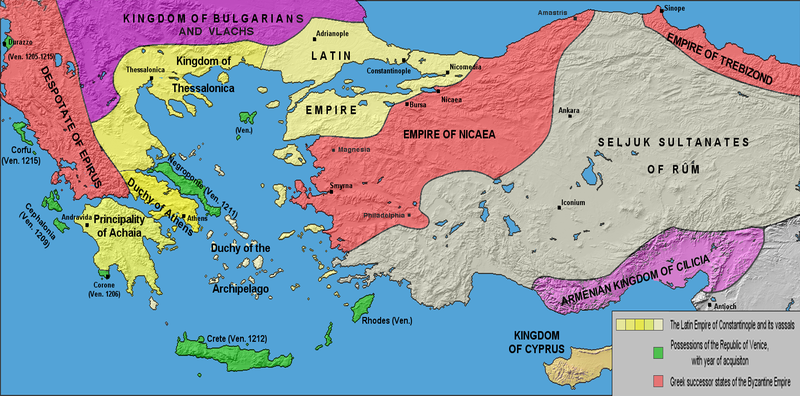Here's my entry...Relatively early for once. 
The Peloponnese Empire
"Once Constantinople fell to the Bulgarian armies, no-one had expected the Latin Empire to survive. It had already declined considerably by the time the Latin Emperor fled Constantinople, with most of its already meagre possessions lost to the Empire of Nicaea and the Despotate of Epirus in the years before.
The Latin Empire would live on, however, as the Emperor escaped to Mystras, then the capital of the Principality of Achaea, one of the last bastions of Latin power in Greece. Here the Empire would not only live on, but prosper for quite some time. At its height, this new "Peloponnese Empire" encompassed the Peloponnese itself, as well as the Duchy of Athens and the isles of Cephallonia, Negroponte, Naxos and Crete."
Untextured version

The Peloponnese Empire
"Once Constantinople fell to the Bulgarian armies, no-one had expected the Latin Empire to survive. It had already declined considerably by the time the Latin Emperor fled Constantinople, with most of its already meagre possessions lost to the Empire of Nicaea and the Despotate of Epirus in the years before.
The Latin Empire would live on, however, as the Emperor escaped to Mystras, then the capital of the Principality of Achaea, one of the last bastions of Latin power in Greece. Here the Empire would not only live on, but prosper for quite some time. At its height, this new "Peloponnese Empire" encompassed the Peloponnese itself, as well as the Duchy of Athens and the isles of Cephallonia, Negroponte, Naxos and Crete."
Untextured version

Last edited:


